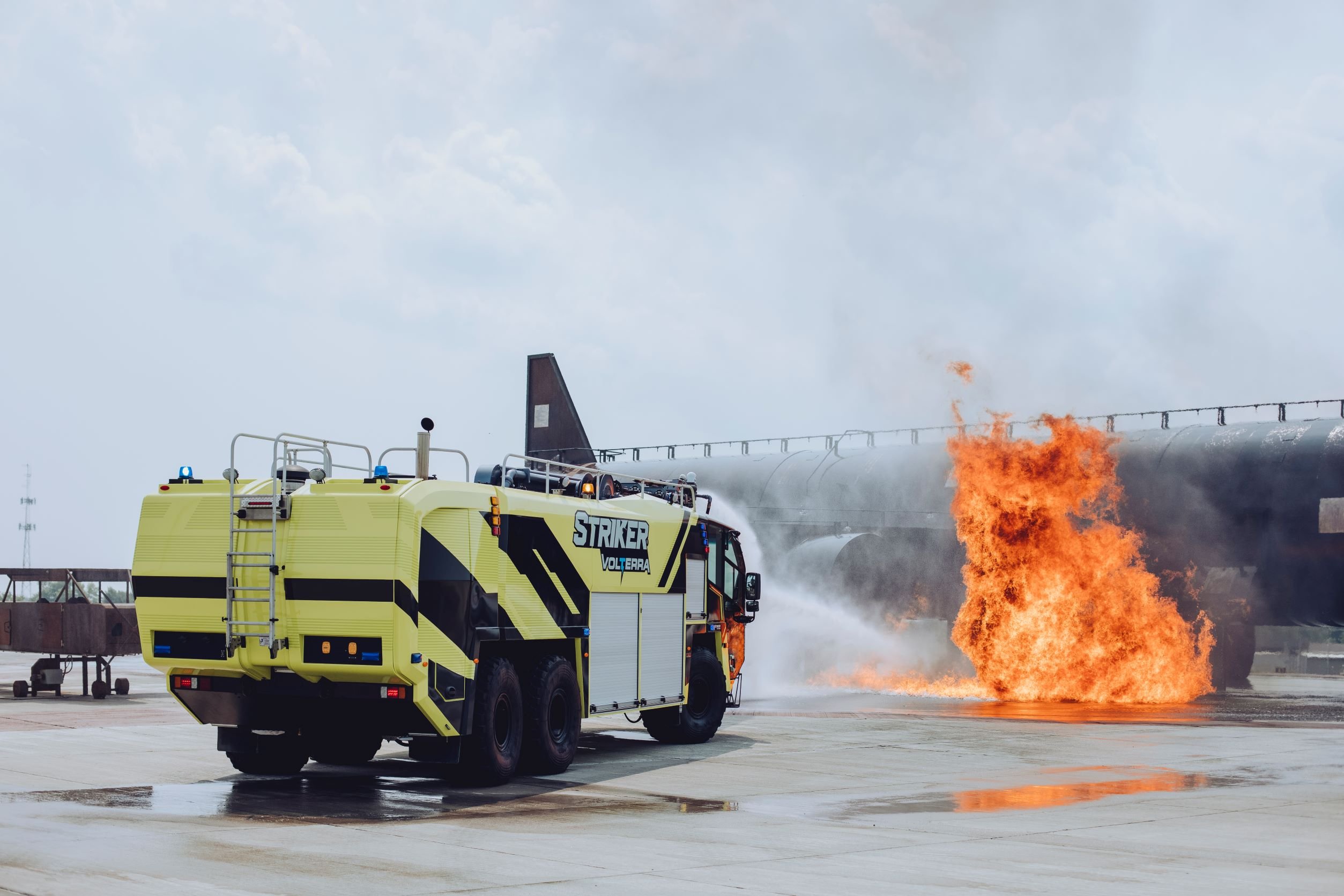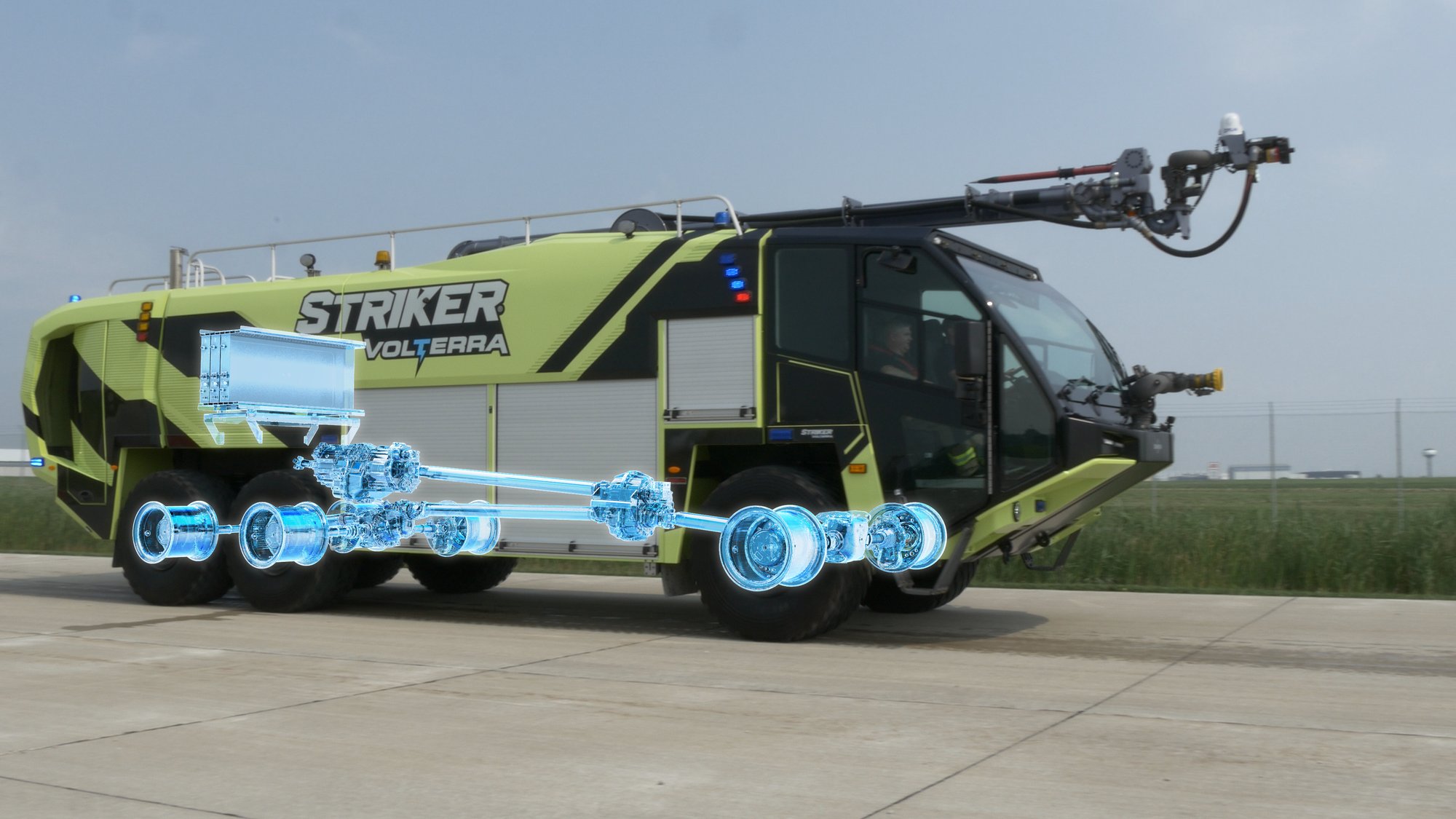
Welcome to Oshkosh Airport Products' series on the innovative features of the Striker Volterra Electric ARFF vehicle. In this installment, we explore regenerative braking on the Striker Volterra ARFF truck. As an industry leader in airport firefighting equipment, we are committed to providing you with accurate and relevant information on this advanced technology. Dive into the benefits of the Striker Volterra ARFF truck's regenerative braking below.

As opposed to friction brakes where kinetic energy is converted to heat to slow the vehicle, the Striker Volterra ARFF has standard regenerative braking which instead converts kinetic energy to electrical energy stored in the high-voltage (HV) Battery. The result is less heat and wear on the vehicle service brake system as well as further reduction in fuel and electricity consumption.
The integration of regenerative braking on the Striker Volterra ARFF is seamless. Slight regenerative braking is engaged on deceleration to simulate the drag present in conventional apparatus. The driver has the option to activate the regenerative brake switch to add additional regenerative braking on deceleration. Finally, when the service brake is initiated, maximum regeneration is activated as needed.
Regenerative braking is implemented in a way that the driver will have similar functionality as conventional apparatus. The UI (user interface) is similar to options for exhaust brake, for example, as found on a conventional apparatus. The result of the functionality is integrated in a way to make the experience seamless to the driver.
Key benefits of regenerative braking include reduced brake temperature and wear as well as reduced fuel consumption which enhances overall efficiency.
This is achieved by converting the kinetic energy of the vehicle to electrical energy for later use as opposed to friction brakes which convert that same energy to heat which is wasted to the environment.
Regenerative braking on the Striker Volterra ARFF is designed to provide a consistent and predictable feel to the driver. If the regenerative braking is not ramped down as the vehicle comes to a stop, a harsh driving experience may result.
Regenerative braking is integrated in a way to seamlessly fit in to the operational profile of the ARFF vehicle. UI elements are effectively identical to the conventional vehicle with an exhaust brake. The driver will notice that the application of regenerative braking is smoother and offers more controllability as they become accustomed to the system.
By carrying a portion of the brake load during aggressive stops, brake temperature is reduced. This may result in a lower incidence of brake fade.
Click the links below to explore our educational series on the Striker Volterra ARFF vehicles innovative features and advanced capabilities. Delve into various aspects of this industry-leading ARFF truck, including its low-emission technology, charging requirements and emergency response adjustments. Learn how these state-of-the-art firefighting solutions are designed to protect passengers and cargo at airports around the world.
